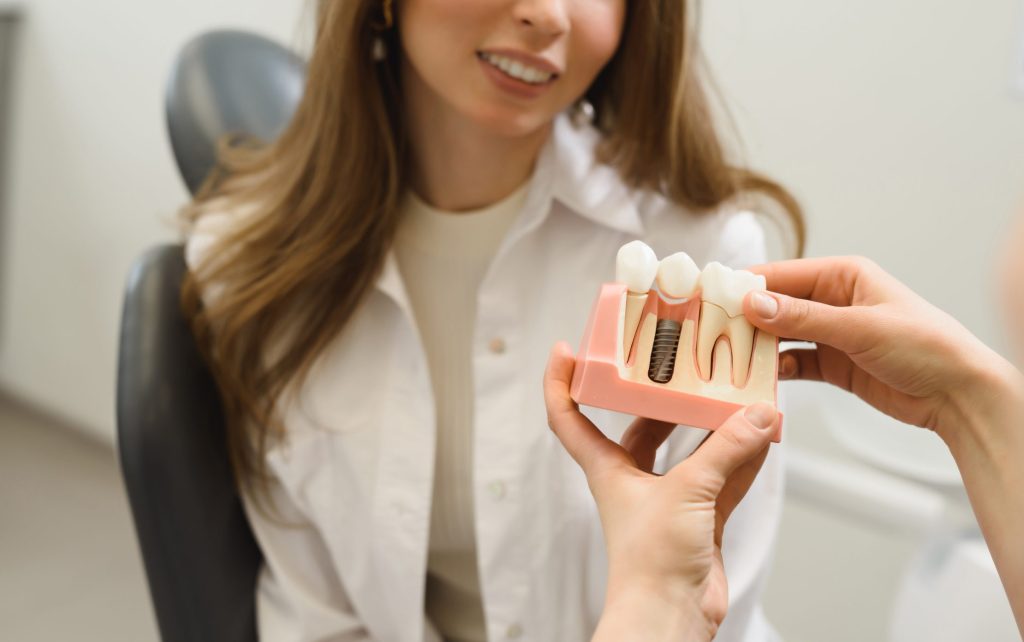When your smile begins to show signs of age, there are many options for whitening stains and covering up small signs of damage. But when entire teeth are lost to decay or damage, you need a more advanced procedure to fill in the gaps. Dental implants are useful for restoring your smile regardless of what has happened to your teeth in the past. However, you can’t put a dental implant in where a tooth still remains. Find out why teeth must be removed for dental implants and how many you can expect to have removed before your restoration work is complete.
Removing Teeth Before Dental Implants
Dental implants are designed to go in place of missing teeth. If your teeth are damaged or compromised but still in place, you will need to have them removed before having implants put in by the dentist. There is no need to remove healthy teeth since the dental implants go in individually and can fit between any remaining teeth. If you do want a full set of implant-supported dentures, you may need to remove some or all of your remaining teeth for a proper fit. However, the majority of patients only have one or two teeth removed at most before adding dental implants to restore their smile.
What Causes Tooth Loss?
Natural teeth can be lost during the aging process due to a number of accidental and avoidable causes. The primary cause of tooth loss in millions of adults is advanced gum disease, also known as periodontitis. Gum disease causes the gum tissue to recede and damages the tooth roots. Even with treatment, it may be impossible to save every tooth affected by it. Accidents that snap the tooth off at the root or knock it loose entirely may also lead to permanent loss. Impacted teeth that never fully emerged are almost always removed, sometimes leaving a gap that is best filled by a dental implant.
Options for Removing Damaged Teeth
When a tooth is damaged to the point where it can’t be saved, it’s usually pulled with a simple extraction procedure by the dentist. In cases where the tooth is impacting or there’s an issue with the severe infection spreading to the jaw, oral surgery may be needed instead. The majority of teeth removed each year are simple extractions and not full-on surgical procedures. If the dentist refers you for surgical intervention, you can trust it’s a necessary treatment to restore your oral health. Badly damaged and fragile teeth are sometimes best removed by an oral surgeon to ensure there are no fragments or roots left behind in the gum tissue, which would interfere with dental implant placement later on.
Deciding Between Partial and Full Removal
If you are only in need of one or two dental implants to update your smile, individual removal of damaged teeth is likely the best option. Patients with more advanced conditions that only have a few natural teeth left may want to choose full removal instead. This allows you to use a hybrid design of full dentures that are anchored by dental implants. You get a whole smile all at once with minimal work to put the implants in place rather than the need for dozens of individual posts. Your dentist can advise you on whether removing a few damaged teeth or aiming for full removal would be a better choice for your particular situation.
Why Choose Dental Implants?
Dental implants offer the best and longest-lasting replacement for natural teeth when you lose them. Each implant consists of a titanium post inserted into the gum tissue and inserted into the bone. This mimics the roots of your natural teeth, creating a firmly anchored implant that you can chew and bite with. A porcelain reconstruction custom-made to fit your smile is fitted over this post. It will last for a decade or longer with proper care, but it’s easily replaced when necessary without the need for a new implant post. This makes it as easy as possible to maintain your smile for the rest of your life with just regular brushing and visits every six months to your dentist.
Preventing Tooth Loss
The best way to prevent tooth loss is to brush at least twice a day and floss once. Routine oral health care goes a long way in keeping your smile strong and healthy, not to mention sparkling. Visit your dentist every six months for a deeper cleaning and watch for the early signs of gum disease. Getting treatment if your gums puff up, turn red at the edges, or bleed when you brush will prevent the disease from advancing and affecting the long-term health of your mouth. Protect your teeth to prevent tooth loss and you won’t have to worry about extractions or dental implants for many years to come.
Taking Care of Dental Implants
Once you have dental implants in place, you still need to care for these dental devices to keep them going for a decade or longer. Brush your teeth regularly and give the implants plenty of attention from all directions to make sure food particles don’t gather around the post and irritate the healthy gum tissue. See your dentist for a checkup if you notice any issues with soreness, redness, or bad breath.
Make the most of your smile for life with strategic use of dental implants as they’re needed. Here at Camelot Dental Group, we can handle both tooth extractions and dental implants for you




